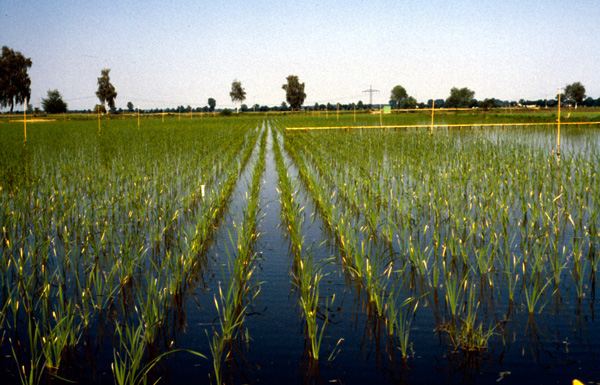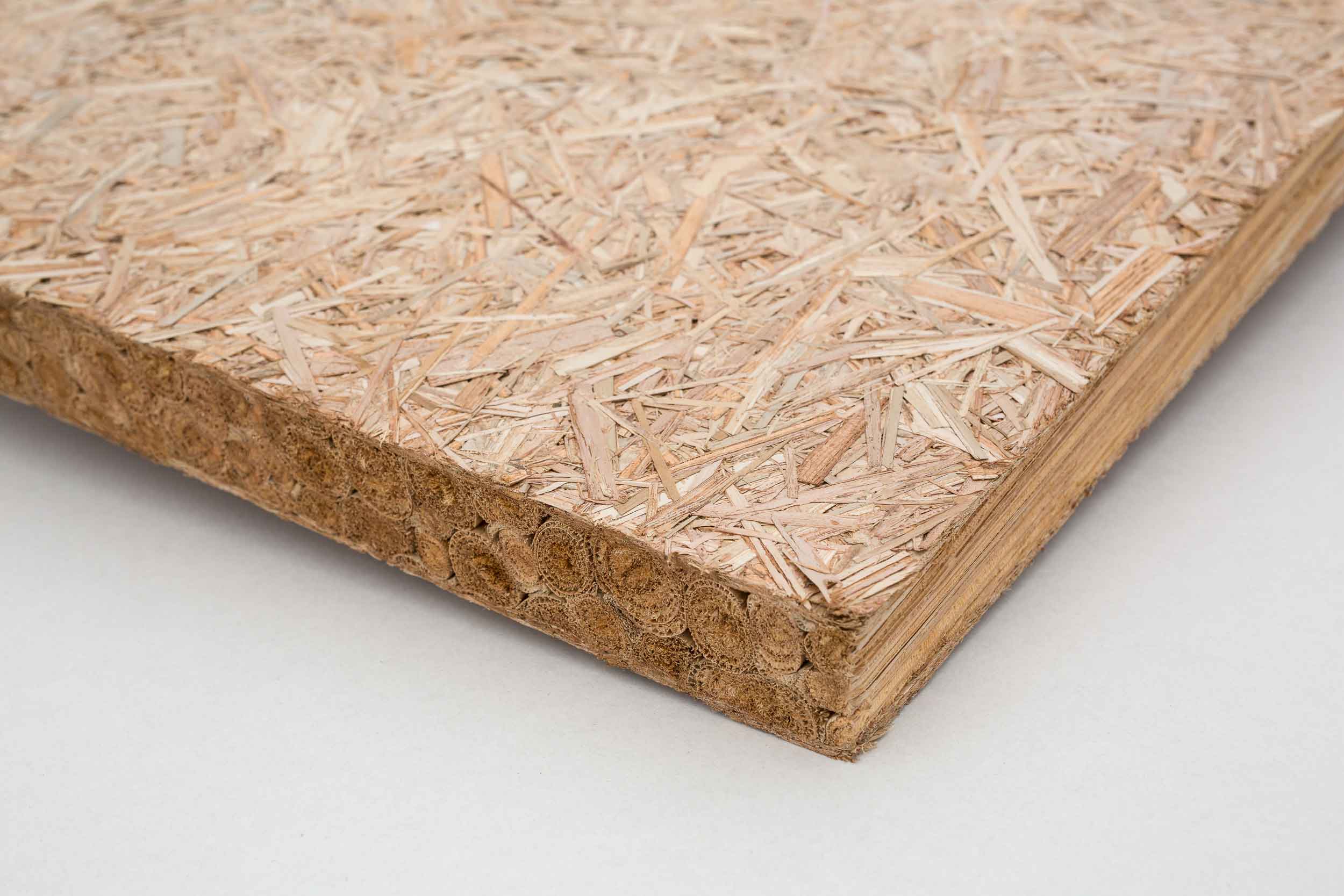As a result, cattail is predestined as a raw material for industrial use. Typha crops are robust natural monocultures that produce 15 to 20 tons of dry matter per hectare every year (about 150 - 250 m³ of building material). This corresponds to four to five times the amount native coniferous forests provide. If typha is cultivated as a raw material on Germany's lowland moor soils and valley floors (as nutrient traps, carbon sinks and erosion barriers, for water retention and biotope formation), this would cover the total demand for insulation and wall building materials. The feasibility of cultivating typha was demonstrated in the project "Cultivation of cattail in fens", funded by the German Federal Environmental Foundation (DBU) and headed by the Chair of Landscape Ecology at the Technical University of Munich (1998-2001).
Building material made of cattail
Tabbed contents
Development
Due to its remarkable structural properties, building materials can be created which offer a combination of insulation and load-bearing functions that is unique on the market. The exceptional suitability of Typha's leaf mass for making innovative building materials is due to the plant's structure. The leaves have a fiber-reinforced supporting tissue filled with a soft open-cell spongy mass, giving them outstanding structural strength and excellent insulating properties.
In recent years, in collaboration with the inventor Dipl.-Ing. Werner Theuerkorn, the Fraunhofer Institute for Building Physics IBP has carried out numerous laboratory and field tests on various product developments made of typha. In the course of the research work, a variety of interesting products were developed, in particular a panel made of mineral-bound, isotropic material.
Properties
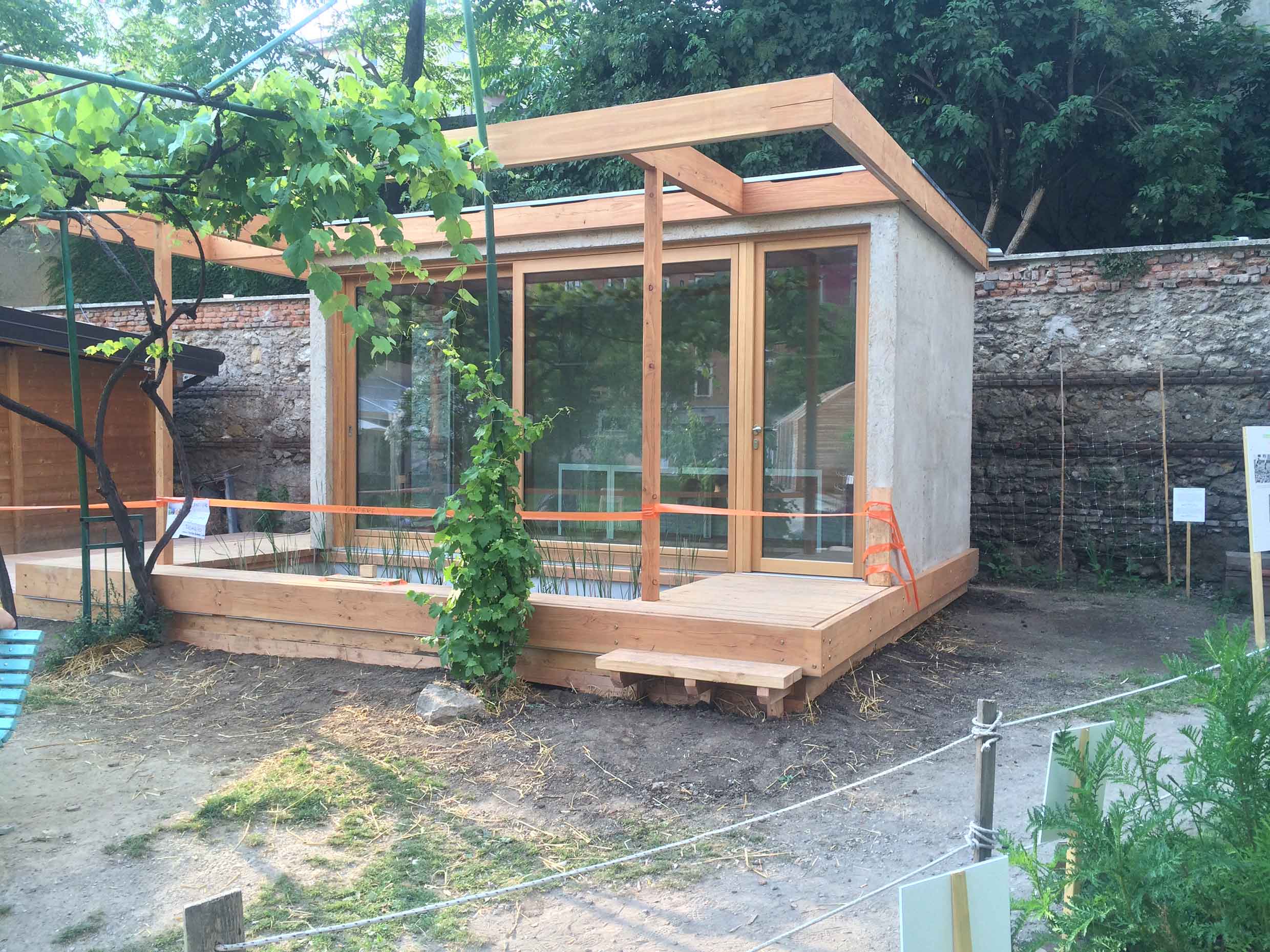
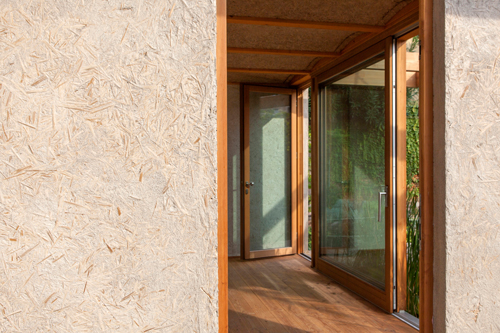
Despite its low thermal conductivity of 0.052 W/mK, the newly developed magnesite-bonded typhaboard exhibits exceptional strength and dynamic stability, so that it can also be used to overcome static problems. Moreover, this innovative building material offers many other advantages:
- renewable building materials with a very high resistance to mold growth superior protection against fire and noise and thermal insulation in summer
- easy to process with all common tools
- relatively breathable and capillary active
- requires little energy to produce
- recyclable
Example of use
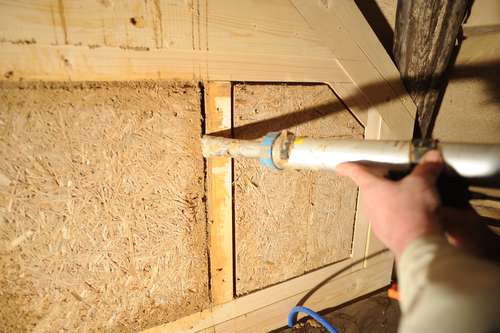
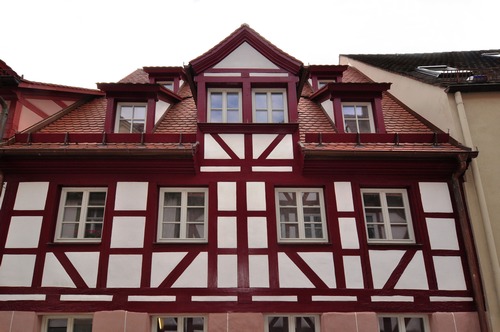
The half-timbered building in Pfeifergasse 9 in Nürnberg, renovated by the Altstadtfreunde Nürnberg e.V., is an asymmetrical building with a gabled roof and an inadequately reinforced supporting structure. The assignment was to reveal the timber frame construction again, to comply with German Energy Conservation Regulations (EnEV 2009) and take into account aspects of the preservation of historic buildings while stabilizing the building at the same time. The typhaboard material used met all these requirements. The project was funded by the German Environmental Foundation (DBU) and the Bavarian State Office for the Preservation of Historical Monuments (Bayerisches Landesamt für Denkmalpflege).
The typhaboard enabled an extremely slim exterior wall with a thickness of 16 cm (plus 4 cm plaster) with wall heating to be constructed. Because it is so easy to work with and has such a high structural strength, it was no problem to shape the material to the irregular sloping walls. To make it windproof, expanding mortar containing typha was inserted into the joints and cracks in the wood with a cartridge gun. The exterior plaster was applied directly to the typhaboard. A particularly breathable three-layer coating of plaster of calcareous tuff sand and lime reinforced with the umbrella-shaped seeds of cattail was used.
Fraunhofer IBP investigated the suitability of the wall structure over a period of one and a half years and determined a thermal transmittance (U-value) for the infill of 0.26 W/m²K. The U-value of the whole building (infill and timber construction) is 0.31 W/m²K. The low moisture content introduced by the expanding mortar and plaster dried quickly, resulting in a constant moisture value in the timber frame of less than 20 M.-%.
